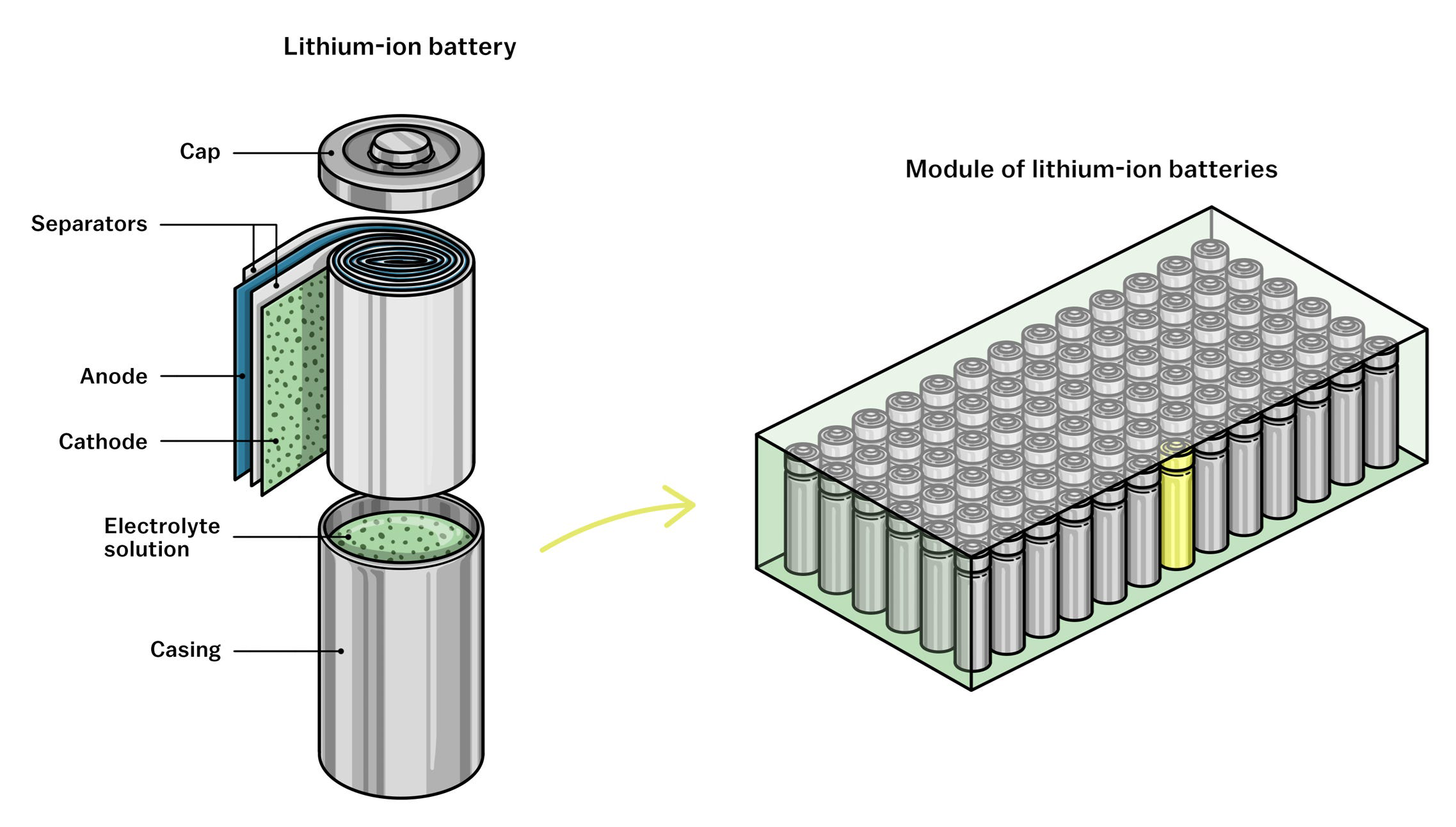Components of a battery cell Battery cell is the basic...
The internal resistance of a battery pack
The internal resistance of the battery is one of the important parameters affecting the performance of the battery. For the battery pack, the internal resistance not only affects its charge and discharge efficiency, but also directly relates to the battery heat, life and safety. This paper will discuss in detail the definition of battery internal resistance, influencing factors, measurement methods and their importance in practical applications.
definition
Battery internal resistance refers to the resistance to current flow inside the battery, usually expressed in ohms (Ω). It can be viewed as the degree to which the battery "blocks" the current during discharge or charging. The lower the internal resistance of the battery, the higher the efficiency of the battery at work; On the contrary, high internal resistance will lead to energy loss, heat and battery performance degradation.
Battery internal resistance can be divided into two categories:
Dc internal resistance (DCR) : This is the internal resistance measured in a static state, usually obtained by applying a DC current to measure the voltage drop.
Ac internal resistance (ACR) : This is the internal resistance measured by applying an AC signal, which gives a more comprehensive picture of the impedance characteristics of the battery at high frequencies and is commonly used to analyze battery dynamic behavior.
The importance of battery internal resistance
Battery internal resistance plays a key role in battery use, mainly reflected in the following aspects:
Charge and discharge efficiency: The voltage drop generated by the internal resistance (that is, the power loss caused by the internal resistance) will reduce the charging and discharging efficiency of the battery, affecting the overall performance of the battery.
Heat: the greater the internal resistance, the more heat is generated when the current passes through. In the case of high load, excessive internal resistance may lead to battery overheating, and even cause safety hazards.
Life: Higher internal resistance will accelerate the aging and performance degradation of the battery, and shorten the service life of the battery.
Battery Management System (BMS) : In a battery management system, internal resistance measurements are used to monitor the health of the battery in real time, ensuring safety and performance.
Influencing factors of internal resistance
The internal resistance of the battery is affected by many factors, including:
Battery type: Different types of batteries (such as lithium ion, battery, lead acid battery) have significant differences in their internal resistance. For example, the internal resistance of lithium-ion batteries is generally lower than that of lead-acid batteries.
Temperature: The internal resistance has an inverse relationship with temperature, with an increase in temperature generally decreasing the internal resistance, while a lower temperature increases it significantly. Therefore, the discharge capacity and efficiency of batteries are often limited in cold environments.
Battery state: The battery charge/discharge state, the number of cycles and the loss will affect the internal resistance. As the battery is used more times, the internal resistance usually increases gradually, affecting the performance.
The concentration and temperature of the electrolyte: For liquid batteries, the concentration and temperature of the electrolyte will have an impact on the conductivity of ions, thus affecting the internal resistance.
Electrode material: The material and structure of the electrode also have a great impact on the internal resistance of the battery. Highly conductive materials usually reduce the internal resistance of batteries.
Measurement of battery internal resistance
The measurement of battery internal resistance is an important part of battery performance evaluation. The commonly used methods include:
Dc measurement method: The internal resistance is calculated by applying a known DC current and measuring the voltage drop. The formula is as follows.
[R_{\text{inside}} = \frac{U_{\text{down}}}{I}]
Where (U_{\text{drop}}) is the voltage drop and (I) is the current.
Ac impedance testing: An impedance analyzer is used to apply a tiny AC voltage at different frequencies and measure the current response, which penetrates into the electrochemical properties of the cell and calculates its internal resistance.
Pulse discharge method: By applying a large current pulse in a short time, observe the voltage response, so as to calculate the internal resistance. This method is often used for fast dynamic measurements.
Application area
Energy storage system
In industrial applications, the change of internal resistance will also affect the efficiency and stability of large-scale energy storage system, especially in the high-current discharge environment, the optimal design of internal resistance is very important.
Electric vehicles
Internal resistance is directly related to the performance of electric vehicles, affecting the endurance and acceleration performance. Designing more optimized battery packs to reduce internal resistance can significantly improve the overall efficiency of evs.
Renewable energy storage
In solar and wind energy storage systems, the internal resistance of the battery will affect the charging and discharging efficiency of the battery, and then affect the economy and reliability of the system.
Electronic devices
For consumer electronic products, internal resistance affects their charging time and service life, especially when designing small and lightweight batteries.
Conclusion
Battery internal resistance is an important indicator to determine the performance of the battery, which has a direct impact on the charging and discharging efficiency, heat and life of the battery. Understanding the concept, influencing factors and measurement methods of battery internal resistance can help engineers make more informed decisions in battery design and application. With the advancement of technology, reducing internal resistance and improving battery efficiency will continue to be an important goal of battery research, and promote the development of electric vehicles, renewable energy and consumer electronics.

Home energy storage product series
A lithium battery pack for home energy storage systems, which is compatible with solar panels and the sun The inverter can work together with the power grid to power household appliances, and it can also be used as a For off grid systems.
Extended reading
Fluorine rubber: the ideal material for battery sealing ring
Fluorine rubber: the ideal material for battery sealing ring With...
THE ESSC Brand promise
Global supply
Our products sell well all over the world, covering many countries and regions, through the global logistics network, to provide customers with convenient purchasing experience.
Rigorous quality
We adhere to the highest quality control standards to ensure every product meets industry regulations and customer expectations, earning trust through consistent excellence.
Excellent service
With a customer-centric approach, we provide prompt responses, professional support, and personalized services, aiming to deliver the best user experience and long-term value.


